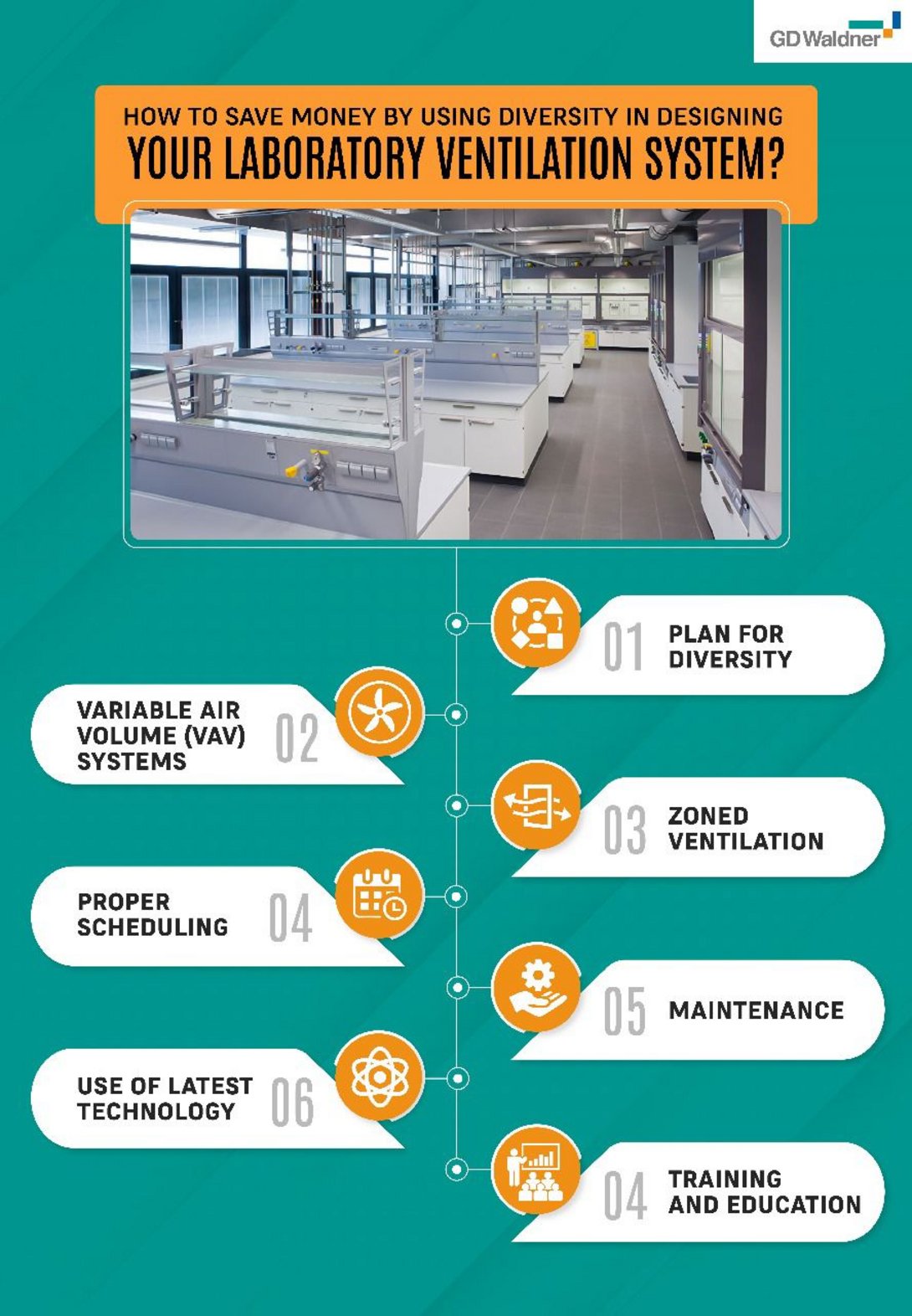Unlock cost savings through diversity in lab ventilation system design! Before you dismiss this as overly complex, let's break it down. In this context, "diversity" means recognising that not all fume hoods in a lab run 24/7. A diverse system capitalises on this, decreasing the required ventilation capacity when not in use, to reduce your expenses ultimately.
So, how can we use diversity in our ventilation system to save those precious dollars? Let’s get down to it.
1. Plan for Diversity: When designing your ventilation system, consider the lab’s daily operations. Will all fume hoods be in use at the same time? Probably not. So, design your system to adapt to changing needs, rather than to accommodate maximum usage all the time. This can significantly reduce the size - and cost - of your system.
2. Variable Air Volume (VAV) Systems: VAV systems adjust airflow according to the needs of each hood. When a hood isn’t in use, the system reduces the airflow, saving energy and costs. This is diversity in action - and it’s a money-saver. But VAV is more complex to manage and maintain so make sure it is right for your situation.
3. Zoned Ventilation: Splitting your lab into zones, each with its own control over ventilation, allows for more precise use of ventilation resources. Zones not in use can minimize ventilation, while those in operation receive the necessary airflow. More efficiency, less cost.
4. Proper Scheduling: Scheduling different tasks to occur at different times can maximize the benefits of diversity. By preventing all energy-intensive tasks from occurring simultaneously, you can reduce peak load, saving energy and reducing costs.
5. Maintenance: A well-maintained ventilation system operates more efficiently and lasts longer, reducing both energy costs and the costs of frequent replacements. Regular testing and maintenance can go a long way.
6. Use of Latest Technology: Modern systems come with advanced controls that can adapt to the changing needs of a lab in real time. They might be a significant investment upfront, but they can lead to substantial savings in the long run.
7. Training and Education: Last, but by no means least, make sure everyone in your lab understands the importance of ventilation management. A little awareness can go a long way in saving energy and costs. Training the users is critical to save energy and make your lab safer.
So there you have it -- how diversity in designing your lab ventilation system can save you money. Remember, a well-planned ventilation system is not just a cost-saving measure, but also a safety measure. As always, your safety is paramount.

